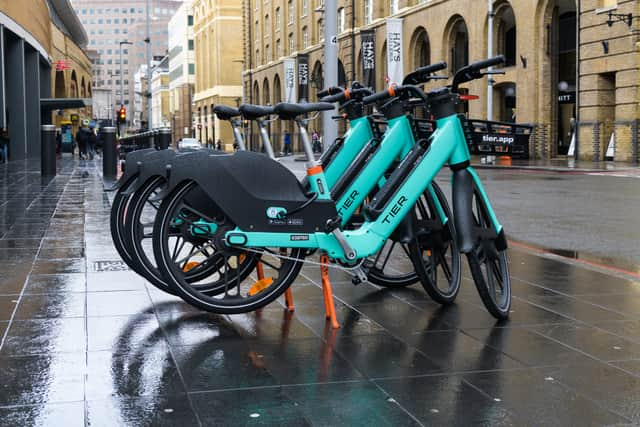E-bikes are rapidly gaining popularity as a sustainable, efficient, and enjoyable mode of transportation. However, with the rise of electric bikes, governments around the world have implemented regulations to ensure that these vehicles are used safely and responsibly. Understanding e-bikes law is crucial for riders to stay compliant and avoid any legal issues while enjoying the benefits of electric biking. This article will guide you through the various aspects of e-bikes law and the safety requirements associated with riding an e-bike.
What is E-Bikes Law?

E-bikes law refers to the set of regulations and legal requirements governing the use of electric bikes. These laws can vary significantly depending on the country, state, or even city in which you ride. The purpose of e-bikes law is to ensure the safe operation of electric bikes and to distinguish them from other motorized vehicles such as motorcycles or mopeds. Understanding e-bikes law is essential for any rider, as violating these regulations can result in fines, penalties, or even legal action.
In many regions, e-bikes are classified based on their motor power, speed, and whether or not they require pedaling to operate. These classifications determine how e-bikes can be used and where they are allowed to be ridden.
Key Components of E-Bikes Law
E-bikes law typically covers several important areas, including the classification of e-bikes, speed limits, motor power, helmet requirements, and where e-bikes can be legally operated. Let’s look at some of these components in more detail.
1. E-Bike Classifications
One of the most important aspects of e-bikes law is the classification of different types of electric bikes. In many countries, e-bikes are divided into three main classes:
- Class 1: These e-bikes have pedal-assist functionality, meaning the motor only provides assistance when the rider is pedaling. The motor is limited to a maximum speed of 20 mph (32 km/h).
- Class 2: These e-bikes have a throttle that allows the rider to operate the motor without pedaling. However, the motor’s maximum speed is also limited to 20 mph (32 km/h).
- Class 3: These e-bikes are similar to Class 1 in that they have pedal-assist functionality, but they have a higher speed limit of 28 mph (45 km/h).
The classification of e-bikes plays a significant role in determining where and how they can be ridden. For example, some regions restrict Class 3 e-bikes from using certain bike paths or trails due to their higher speed.
2. Speed Limits
E-bikes law often imposes strict speed limits to ensure the safety of both riders and pedestrians. The speed limits for e-bikes vary depending on their classification, but generally, Class 1 and Class 2 e-bikes are limited to 20 mph (32 km/h), while Class 3 e-bikes can go up to 28 mph (45 km/h). It’s important to note that exceeding these speed limits can result in fines or other penalties.
In addition to these limits, some countries and regions impose speed restrictions on e-bikes when they are ridden in certain areas, such as parks or pedestrian zones. Always be aware of local speed limits when riding your e-bike to stay compliant with e-bikes law.
3. Motor Power Restrictions
The motor power of an e-bike is another key component of e-bikes law. In most places, the maximum power output for an e-bike motor is 750 watts. E-bikes with motors that exceed this power limit may be classified as mopeds or motorcycles, which are subject to different regulations, including the need for a license and registration.
Understanding the motor power restrictions in your area is crucial to ensure that your e-bike complies with local laws. For instance, in the European Union, the motor power limit for e-bikes is 250 watts, and exceeding this limit would require additional licensing and insurance.
4. Helmet Requirements
Helmet laws for e-bikes vary depending on the rider’s age and the e-bike classification. In some regions, e-bikes law requires all riders to wear helmets, regardless of age or bike classification. In other areas, helmet use is only mandatory for minors or riders of Class 3 e-bikes.
Even in places where helmets are not legally required, wearing one is highly recommended for safety. Helmets reduce the risk of head injuries in the event of an accident and are an essential safety measure for any e-bike rider.
5. Where You Can Ride
Another critical aspect of e-bikes law is where electric bikes are allowed to be ridden. Many regions regulate the use of e-bikes on bike paths, roads, and trails. For example, some cities allow Class 1 and Class 2 e-bikes to be used on bike paths and shared pedestrian spaces, while Class 3 e-bikes may be restricted to roads due to their higher speed.
It’s important to familiarize yourself with local e-bikes law to avoid riding in prohibited areas. Some national parks, nature reserves, or city trails may have specific restrictions regarding e-bike usage.
Examples of E-Bikes Law in Different Countries
Since e-bikes law varies from place to place, it’s helpful to look at specific examples to understand how regulations are applied around the world.
1. E-Bikes Law in the United States
In the United States, e-bikes law is governed at both the federal and state levels. Federally, e-bikes are classified into three classes, as discussed earlier, and are considered bicycles as long as their maximum motor-assisted speed does not exceed 20 mph (32 km/h). Riders are not required to have a license or insurance for Class 1 and Class 2 e-bikes.
However, individual states have their own e-bikes law regarding where they can be ridden and additional speed or motor power restrictions. For example, California follows the three-class system but also mandates that riders of Class 3 e-bikes must be at least 16 years old and wear a helmet.
2. E-Bikes Law in the European Union
In the European Union, e-bikes law defines electric bikes as bicycles with a motor power limit of 250 watts and a top speed of 25 km/h (15.5 mph). E-bikes that exceed these limits are considered motor vehicles and require a license, insurance, and registration. Additionally, the motor must only provide assistance when the rider is pedaling.
Most EU countries allow e-bikes to be ridden on bike lanes and paths, but there may be specific restrictions in some areas.
3. E-Bikes Law in Canada
Canada’s e-bikes law is similar to that of the United States, with e-bikes classified as bicycles as long as their motor power does not exceed 500 watts and their maximum speed is 32 km/h (20 mph). Riders do not need a license or insurance to operate an e-bike, but helmet use is mandatory across the country.
Each province in Canada has additional regulations regarding where e-bikes can be ridden. For instance, some provinces allow e-bikes on bike lanes, while others restrict them to roads.
E-Bike Safety Requirements
In addition to understanding e-bikes law, it’s important to follow safety requirements to protect yourself and others while riding. Here are some common safety measures associated with riding e-bikes.
1. Lights and Reflectors
Many regions require e-bikes to be equipped with front and rear lights, especially when riding at night or in low-visibility conditions. Reflectors on the bike’s frame and wheels are also important for increasing visibility to other vehicles on the road.
2. Brakes
All e-bikes are required to have functioning brakes that meet specific safety standards. In some areas, e-bikes law mandates that electric bikes have both front and rear brakes to ensure proper stopping power.
3. Mirrors and Horns
While not mandatory in all regions, adding mirrors and a horn to your e-bike can enhance safety. Mirrors allow you to monitor traffic behind you, while a horn can help alert pedestrians or vehicles to your presence.
Conclusion: Staying Compliant with E-Bikes Law
Understanding e-bikes law is essential for anyone who rides an electric bike. These laws are designed to ensure the safety of riders, pedestrians, and other vehicles on the road. By familiarizing yourself with local regulations, such as e-bike classifications, speed limits, and helmet requirements, you can stay compliant and avoid legal issues.
In addition to adhering to e-bikes law, it’s crucial to follow safety guidelines and equip your e-bike with the necessary features to ensure a safe riding experience. Whether you’re commuting to work or enjoying a leisurely ride, always prioritize safety and respect the laws governing electric bikes in your area.










